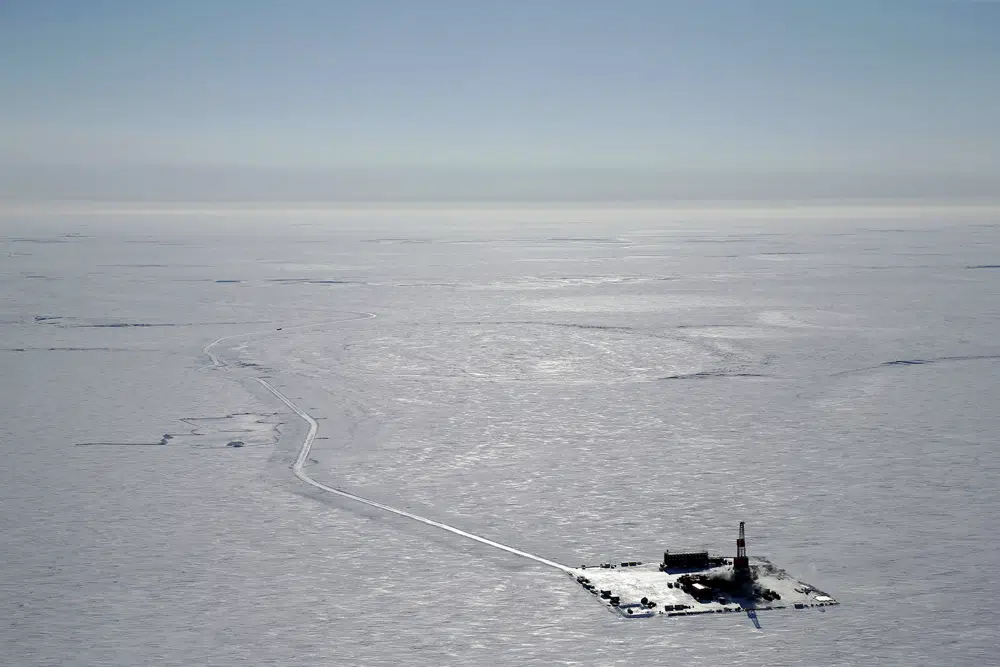
Debate continues over the Biden administrations approval of the “Willow Project,” the largest drilling project on U.S. soil in history.
On March 13, the U.S Bureau of Land Management officially gave ConocoPhillips, the largest oil producer in Alaska, a green light to open new drilling wells on the North Slope. The decision came in spite protests from climate activists, according to AP news.
On April 13, 33 House Democrats signed a letter urging the administration to reverse the decision.
The disconnect between Biden’s previous environment rhetoric and his recent decision has led to a feeling of betrayal among some young Americans.
Abner Hardy, BYU Geography major and climate activist, believes the decision comes from the continual pressure of high gas prices.
“He seems to be doing everything he can to lower gas prices, even though it’s very pro big business, and not in line with his stated environmental goals,” Hardy said.
However, despite the backlash, native populations of the Arctic Slope have expressed support for the project.
Nagruk Harcharek, president of Voice of the Arctic Iñupiat, feels it is important for people to understand how much indigenous communities rely on the industry.
Harcharek said the North Slope Borough, a municipal body that builds infrastructure for local communities, relies on resource development projects within their lands.
“Any development that happens on the North Slope Borough, the Borough is able to tax that infrastructure as a form of revenue and reinvest those dollars back into those communities.”
This taxation provides 95% of the Boroughs budget and, according to Harcharek, that money has provided running water, police and fire protection, and other first world infrastructure for communities.
“The boroughs have invested hundreds of millions of dollars into housing across the north slope, into road development. Without that economic opportunity, a lot of those services that are currently provided would begin to degrade,” Harcharek said.
Harcharek also countered claims the project will hurt subsistence living wildlife, saying Iñupiat communities have been involved and “coexisting” with resource development for fifty years.
“If there was any sort of concern a project like Willow would have a significant negative impact on our way of life … we would not be in support of it,” Harcharek said.
The decision also comes with support from Alaska’s own House of Representatives. A unanimous resolution argues the project will help rural communities by providing jobs and expanded healthcare services. They also argued communities have seen an increase in life expectancy where resource developing activities occur.
First announced in January 2017, the wells are estimated to pump 180,000 barrels of oil every day and 600 million over the course of the project’s life. The Bureau of Land Management estimates the project could generate between $8 and $17 billion for Alaska, the federal government and communities around the National Petroleum reserve in Alaska.
A petition for the president to deny Conoco Phillips drilling permission has reached over 5 million signatures on Change.org.
Minister of Interior Deb Haaland released a video via Twitter on March 13 addressing the controversy and reaffirming the administration’s commitment to climate change. Haaland stated that the Willow Project issue was “complex” and had been inherited by them after previous administrations had given leases to the company.
Haaland stated the administration made a 40% reduction in ConocoPhillips original proposition, and the company had agreed to relinquish and not develop 70,000 acres of land.
The Biden administration has made past efforts to cut down on the country’s emissions. In 2021 Biden signed an executive order for all federal vehicle acquisitions to be zero-emissions vehicles by the year 2035.
Professor of BYU’s Chemical Engineering Department, John Hedengren, weighed in on the tension between the Alaskan communities and the goals of tackling climate change.
“It’s not an easy place to live so most of the people in Alaska are somehow tied to the energy industry,” Hedengren said. “Oil and gas will remain a big portion of the energy mix going forward as we transition to renewable and low emission sources.”




